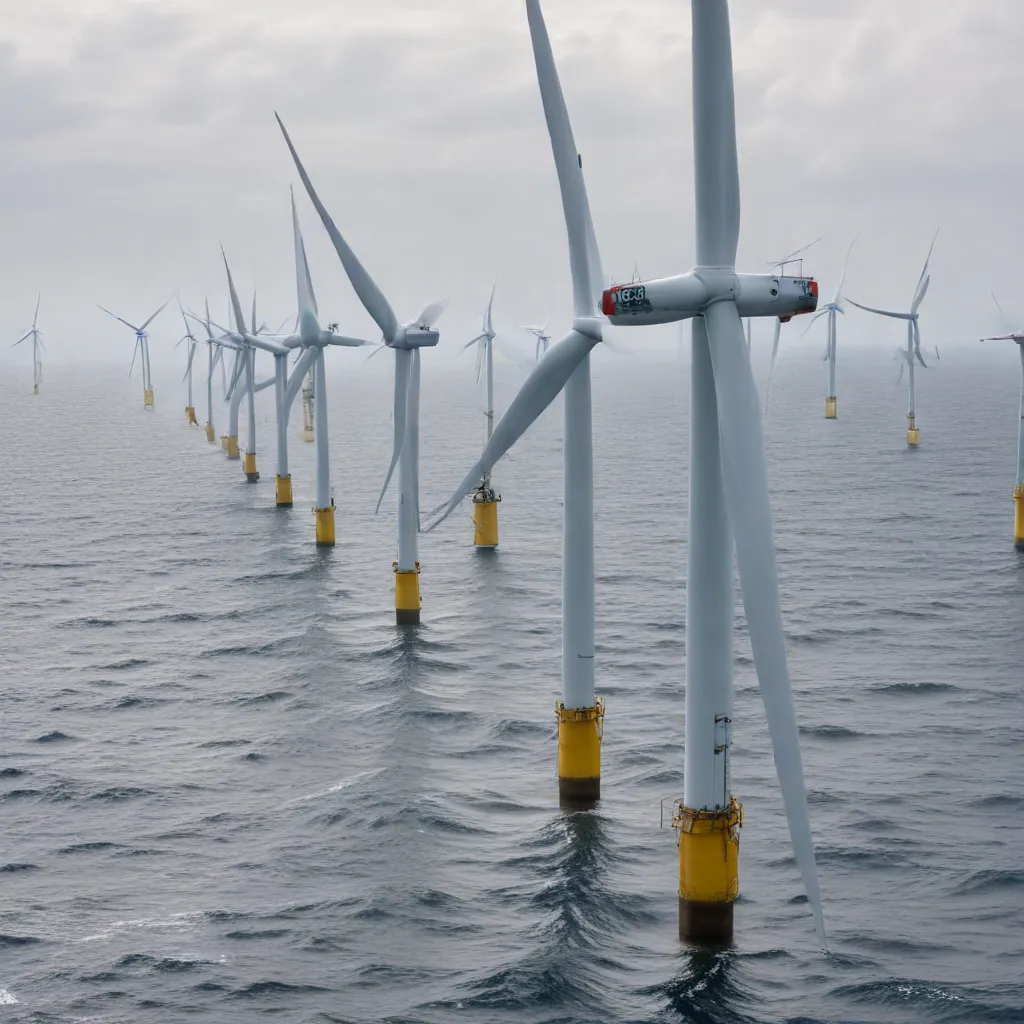
The offshore wind sector has emerged as a transformative force in Europe’s renewable energy landscape, positioning the continent at the forefront of the global clean energy transition. As the European Union (EU) strives to achieve its ambitious climate goals, the strategic deployment of offshore wind farms has become a critical component of its decarbonization strategy.
Global Offshore Wind Market Trends
Worldwide, the offshore wind industry has experienced remarkable growth in recent years. According to the European Future Energy Forum, the global installed capacity of offshore wind reached over 50 gigawatts (GW) by the end of 2023, with Europe accounting for the majority of this installed base. The EU has set a target of at least 60 GW of offshore wind capacity by 2030 and a staggering 300 GW by 2050, underscoring the central role this technology will play in the region’s sustainable energy future.
Technological Advancements in Offshore Wind
Offshore wind technology has undergone a remarkable evolution, driving increased efficiency and cost-effectiveness. The advent of taller wind turbines equipped with larger blades has significantly enhanced the power output of individual turbines, while the development of floating offshore wind platforms has enabled the deployment of wind farms in deeper waters, unlocking vast new areas for exploration. Furthermore, the introduction of multi-purpose interconnectors (MPIs) has revolutionized the integration of offshore wind into the broader energy grid, facilitating the seamless transfer of clean electricity across national borders.
Regulatory and Policy Frameworks
To support the rapid expansion of offshore wind, the EU has implemented a comprehensive regulatory framework and policy mechanisms. The Offshore Renewable Energy Strategy, launched in 2020, sets clear targets for offshore wind capacity and outlines a flexible approach to address common challenges across Europe’s sea basins. Additionally, the EU’s Green Deal and REPowerEU initiatives have provided further impetus, underscoring the pivotal role of offshore wind in achieving the region’s climate neutrality goals.
Environmental Considerations
Offshore Wind and Ecosystem Protection
As the offshore wind sector continues to grow, it is crucial to ensure the preservation of marine ecosystems. The EU’s Biodiversity Strategy for 2030 aims to protect 30% of Europe’s seas, with 10% under “strict protection,” recognizing the importance of safeguarding vulnerable habitats and species. Through the application of ecosystem-based management approaches in maritime spatial planning, the industry and policymakers are working to strike a balance between renewable energy generation and environmental stewardship.
Mitigating Environmental Impacts
The deployment of offshore wind farms can have a range of impacts on the marine environment, including habitat disturbance, underwater noise, and potential effects on migratory patterns of marine life. However, the industry is proactively addressing these challenges through comprehensive environmental impact assessments, innovative mitigation strategies, and the exploration of synergies between offshore structures and marine ecosystems.
Sustainable Energy Generation
Offshore wind’s contribution to Europe’s clean energy transition extends far beyond its immediate environmental benefits. By displacing fossil fuel-based electricity generation, offshore wind farms play a pivotal role in reducing greenhouse gas emissions and supporting the continent’s decarbonization efforts. Moreover, the integration of offshore wind with other renewable technologies, such as power-to-X solutions, opens up opportunities for the production of sustainable fuels, further enhancing the sector’s impact on the energy system.
Economic Opportunities
Offshore Wind and Job Creation
The development, construction, and operation of offshore wind farms generate a significant number of high-skilled, well-paying jobs across various sectors. From engineering and manufacturing to installation and maintenance, the offshore wind industry has become a major driver of economic growth in Europe’s coastal regions, providing new employment opportunities and supporting local supply chains.
Supply Chain Development
To meet the growing demand for offshore wind, the EU is fostering the development of a robust and resilient supply chain. Initiatives such as the European Wind Initiative are supporting the expansion of manufacturing capabilities, the development of innovative technologies, and the enhancement of infrastructure, ensuring that the continent’s industrial base is well-equipped to capitalize on the offshore wind boom.
Investment Opportunities
The offshore wind sector has emerged as a magnet for green investment, attracting significant capital from both the public and private sectors. The establishment of innovative financing mechanisms, such as Power Purchase Agreements and green bonds, has helped to de-risk these projects and unlock new sources of funding, further accelerating the deployment of offshore wind farms across Europe.
Challenges and Limitations
Grid Integration and Transmission
As the offshore wind fleet expands, the integration of this renewable energy into the existing electricity grid poses a significant challenge. Addressing grid congestion, upgrading transmission infrastructure, and ensuring the reliable and efficient transport of offshore-generated electricity to end-users will be crucial in maximizing the sector’s contribution to the energy system.
Cost Competitiveness
While the costs of offshore wind have decreased significantly in recent years, the industry still faces the challenge of maintaining its cost-competitiveness compared to other energy sources. Continued technological advancements, economies of scale, and innovative financing solutions will be essential to further reduce the levelized cost of energy (LCOE) from offshore wind projects.
Logistical Complexities
The remote and harsh marine environment in which offshore wind farms operate presents unique logistical challenges. Issues such as vessel availability, maintenance scheduling, and the coordination of offshore activities require sophisticated planning and execution to ensure the reliable and efficient operation of these facilities.
As the European Union accelerates its transition towards a sustainable energy future, the offshore wind sector stands as a crucial pillar in this transformation. By harnessing the vast wind resources of the seas, Europe is poised to unlock a new era of clean, reliable, and cost-effective electricity generation, ushering in a greener and more resilient energy landscape. Through continued technological innovation, robust policy frameworks, and a steadfast commitment to environmental stewardship, the offshore wind industry is set to play a pivotal role in Europe’s journey towards a carbon-neutral economy.







